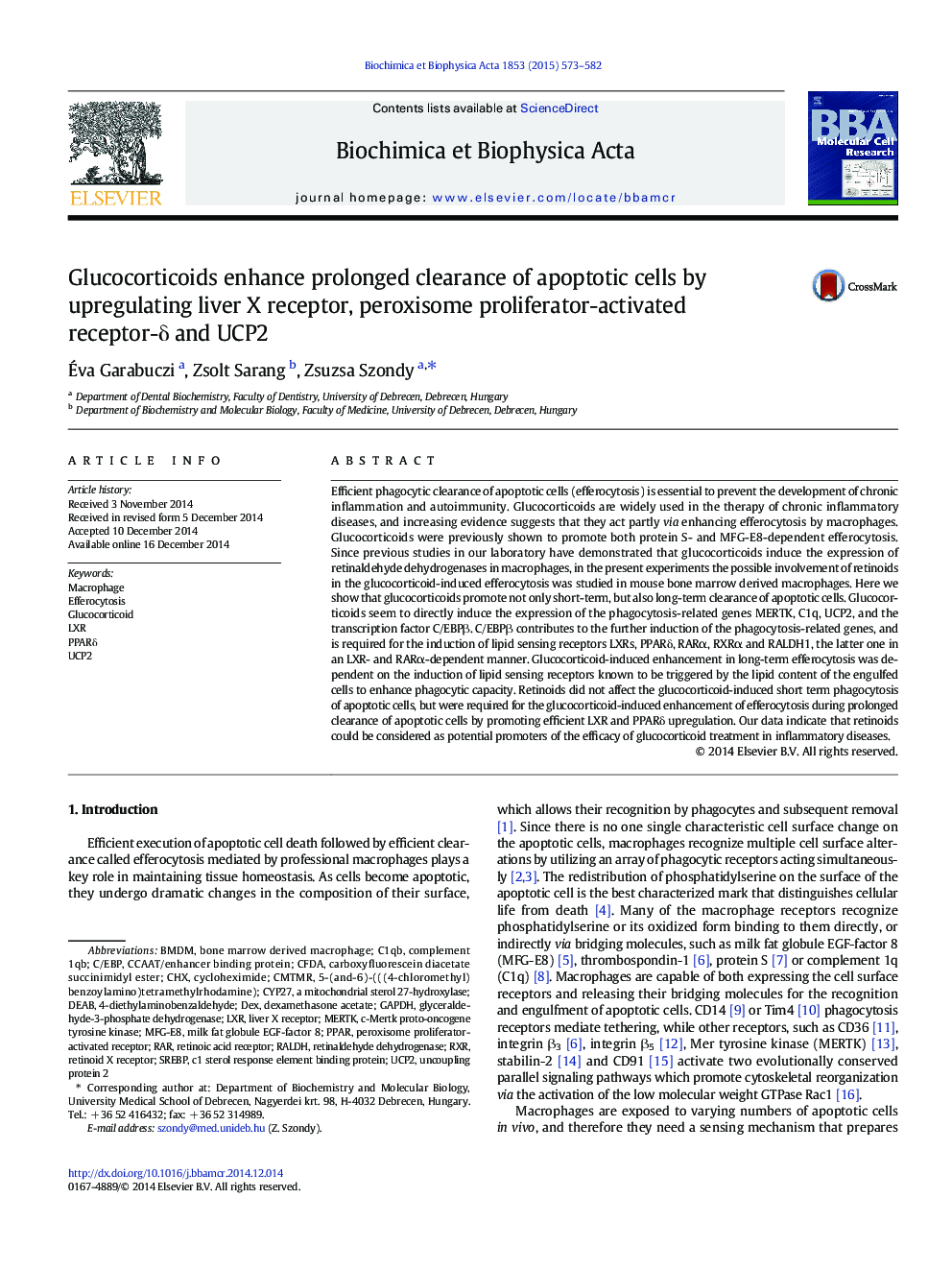| Article ID | Journal | Published Year | Pages | File Type |
|---|---|---|---|---|
| 10801975 | Biochimica et Biophysica Acta (BBA) - Molecular Cell Research | 2015 | 10 Pages |
Abstract
Efficient phagocytic clearance of apoptotic cells (efferocytosis) is essential to prevent the development of chronic inflammation and autoimmunity. Glucocorticoids are widely used in the therapy of chronic inflammatory diseases, and increasing evidence suggests that they act partly via enhancing efferocytosis by macrophages. Glucocorticoids were previously shown to promote both protein S- and MFG-E8-dependent efferocytosis. Since previous studies in our laboratory have demonstrated that glucocorticoids induce the expression of retinaldehyde dehydrogenases in macrophages, in the present experiments the possible involvement of retinoids in the glucocorticoid-induced efferocytosis was studied in mouse bone marrow derived macrophages. Here we show that glucocorticoids promote not only short-term, but also long-term clearance of apoptotic cells. Glucocorticoids seem to directly induce the expression of the phagocytosis-related genes MERTK, C1q, UCP2, and the transcription factor C/EBPβ. C/EBPβ contributes to the further induction of the phagocytosis-related genes, and is required for the induction of lipid sensing receptors LXRs, PPARδ, RARα, RXRα and RALDH1, the latter one in an LXR- and RARα-dependent manner. Glucocorticoid-induced enhancement in long-term efferocytosis was dependent on the induction of lipid sensing receptors known to be triggered by the lipid content of the engulfed cells to enhance phagocytic capacity. Retinoids did not affect the glucocorticoid-induced short term phagocytosis of apoptotic cells, but were required for the glucocorticoid-induced enhancement of efferocytosis during prolonged clearance of apoptotic cells by promoting efficient LXR and PPARδ upregulation. Our data indicate that retinoids could be considered as potential promoters of the efficacy of glucocorticoid treatment in inflammatory diseases.
Keywords
GAPDHCMTMR4-diethylaminobenzaldehydeDEABCFDASREBPRXRRARCYP27LXRMFG-E8Retinoid X receptorDEXPPARCHXBMDMC/EBPDexamethasone acetateRALDHRetinaldehyde dehydrogenaseMERTKcycloheximidebone marrow derived macrophageCCAAT/enhancer binding proteinliver X receptorcarboxyfluorescein diacetate succinimidyl esterglyceraldehyde-3-phosphate dehydrogenaseRetinoic acid receptorperoxisome proliferator-activated receptor
Related Topics
Life Sciences
Biochemistry, Genetics and Molecular Biology
Biochemistry
Authors
Ãva Garabuczi, Zsolt Sarang, Zsuzsa Szondy,
